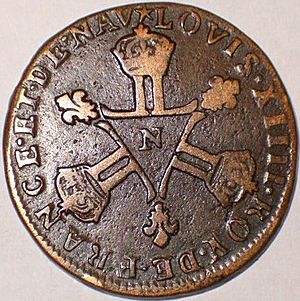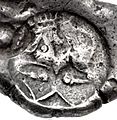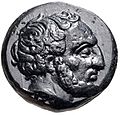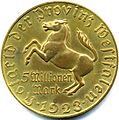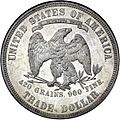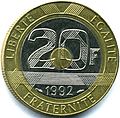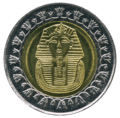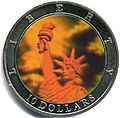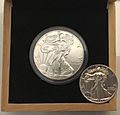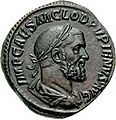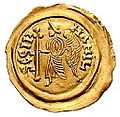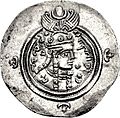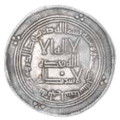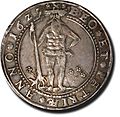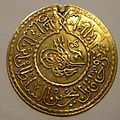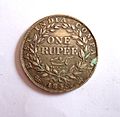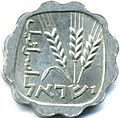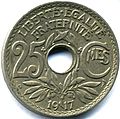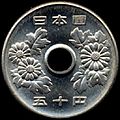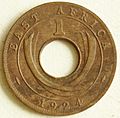Coin facts for kids
A coin is a small, flat, round piece of metal or sometimes plastic. People use coins mainly as a way to pay for things. They are a type of currency that governments usually create.
Coins are made in huge numbers at special factories called mints. This helps make buying and selling goods much easier. Most coins are made of metal or a mix of metals called an alloy. They are usually shaped like a disk.
Coins have been around for about 2,600 years! The first place to make coins was a country called Lydia, which is in modern-day Turkey. Coins usually have a lower value than paper money (banknotes). Sometimes, the metal in a coin can become worth more than the coin's face value, especially if prices go up a lot (this is called inflation). When this happens, governments might take those coins out of use.
Contents
The History of Coins
When Were the First Coins Made?
The very first coins appeared around 600 to 700 years before the Common Era (BCE). They were invented in different places at the same time. These places included Iron Age Anatolia (modern Turkey), Archaic Greece, India, and China.
From these early beginnings, coins quickly spread. By the 5th and 6th centuries BCE, they were used across Greece, Persia, and even into the Balkans.
Coins in the United States
The first coins used in the United States were cents (also known as pennies). These were made in 1793 and were entirely copper. Over time, the amount of silver in many coins was reduced. By the mid-1800s, some coins were made completely from cheaper metals like nickel or cupronickel. These coins were worth more than the metal they contained.
What Do Coins Look Like?
Heads and Tails
Many coins have special designs. One side often shows the head of an important person, like a king, queen, or president. This side is usually called the obverse, or simply heads. You can find a list of famous people on coins at List of people on coins.
The other side of the coin might show its value or a national symbol. This side is called the reverse, or tails.
Coins with Holes
Did you know some coins have holes in the middle? Coins like old Chinese "cash" coins and some Japanese coins had holes. This might have made it easier to string them together on cords. It helped people carry and store their money.
Collecting Coins
Why Collect Coins?
Since coins have been made for a very long time, some people enjoy collecting old ones. This hobby is called numismatics. Collecting coins can be a fun way to learn about history and art. Old coins can sometimes be less expensive than other old items, especially if they are made of common metals like copper.
What Makes a Coin Valuable?
Generally, older coins might be worth more than newer ones. However, how rare a coin is matters even more. Some coins from the 1920s can be worth a lot of money because they are hard to find. On the other hand, some ancient Roman coins are quite common and can be bought for very little.
Modern Coin Features
Today, mints create coins with amazing features. For example, the Royal Canadian Mint makes gold and silver coins with holographic images. These are like 3D pictures that change when you move the coin. Japan even made a special 500 yen coin with a hologram to stop people from making fake (counterfeit) ones.
Some modern coins are even colored! The Royal Canadian Mint made a 25-cent coin with a colored poppy flower to remember soldiers on Remembrance Day.
How Coins Work
Flipping a Coin
Coins are often used to make a random choice between two options. This is called "coin flipping" or "coin tossing." One choice is "heads," and the other is "tails." You flip the coin, and whichever side lands face up determines the choice. This is a simple way to decide something fairly.
Spinning a Coin
You can also spin a coin on a flat surface, like a table. As the coin spins and slowly falls over onto its side, it spins faster and faster. It looks like it's speeding up to an endless spin just before it stops! Scientists have studied this using special cameras to understand how it works.
The Smell of Coins
Have you ever noticed that iron and copper coins have a distinct metallic smell? This smell happens when the coin touches the natural oils on your skin. Your sweat reacts with the metal, causing the skin oils to break down. This creates a special molecule that gives off that "coin" smell.
Images for kids
-
An oxhide ingot from Crete. These metal shapes were like early standardized values.
-
One of the earliest coins with writing: an electrum coin from Phanes in Ephesus.
-
An Athens coin (around 500 BCE) found in Pushkalavati, Ancient India. This is the oldest known coin of its kind found so far east.
-
A coin showing Tissaphernes, a ruler from the Achaemenid Empire, around 420 BCE.
-
A collection of coins, mostly from the Maurya Empire, from the 3rd century BCE.
-
Chinese round coins from the Eastern Zhou dynasty, around 300–220 BCE.
-
A coin made after Alexander the Great's time, showing him as Herakles.
-
Five million mark coin from Germany (1923). Its value dropped very quickly.
-
A silver coin from the Mughal Emperor Alamgir II.
-
A Swiss ten-cent coin from 1879, still similar to coins used today.
-
A 3 Rubles proof coin from Russia, minted in 2008.
-
A holographic coin from Liberia showing the Statue of Liberty.
-
Tiny gold coins called Piloncitos and gold ring-like ingots from the Philippines.
-
A coin of Themistocles as Governor of Magnesia, around 465–459 BC.
-
A coin of Seleucus I Nicator (312–281 BCE).
-
A coin of Antiochus I (281–261 BCE).
-
A coin from the Indo-Greek Kingdom king Antialcidas (105–95 BCE).
-
A coin of Agathocles of Bactria with Hindu gods, around 180 BCE.
-
A Sestertius coin of Marcus Clodius Pupienus Maximus, from AD 238.
-
Three Roman aurei coins showing rulers of the Flavian dynasty: Vespasian, Titus, and Domitian.
-
A silver Drachma coin of Mithridates I of Parthia from the Persian Empire of Parthia, 165 BCE.
-
A silver coin of Borandukht from the Persian Sasanian Empire, 629 CE.
-
A Silver Dirham coin from the Umayyad Caliphate, 729 CE.
-
An Abbasid coin, around the 1080s.
-
An Almoravid coin, 1138–1139.
-
A Brunswick-Wolfenbüttel Thaler coin minted in 1629.
-
A 1768 silver Spanish Dollar (or "piece of eight"), used across the Spanish Empire.
-
An Ottoman coin from 1818.
-
A One Rupee coin issued by the East India Company, 1835.
See also
 In Spanish: Moneda para niños
In Spanish: Moneda para niños


